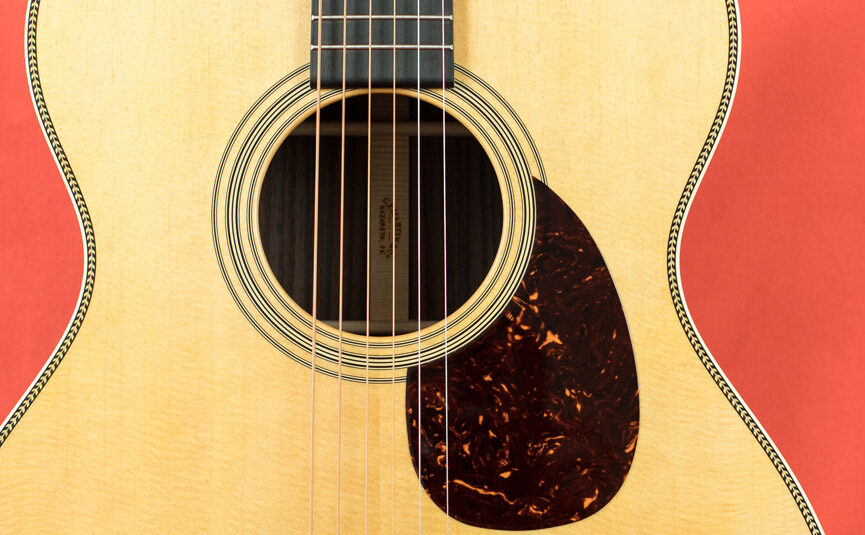Oh, the humidity! How to protect your guitars from humidity damage and decay
Imagine, if you will, that you have just walked out of the World of Music store with a brand-new high-end acoustic guitar. Whether it be the Martin of your dreams or the Cole Clark that keeps you up at night, imagine your heart swelling with pride and joy as you nestle your new instrument into your vehicle for its maiden voyage back home.
You arrive home, and place the new member of the royal family onto its throne, sitting quietly and perfectly. Truly, it is too beautiful to sit in its case! Guitars like these are to be admired, not stowed away!
Now it must be said, that just like us humans, and the trees from whence they came, guitar tonewoods can react greatly to the highs and lows of humidity. If the humidity is too high, in the 55%-100% range, the wood that makes up the guitar can swell, leading to a higher action, disfiguration of the body, cracks in the bridge, and bulges in the fretboard. If the humidity is too low, in the 0%-40% range, it can lead to an unplayable low action, rising frets, cracks all around the body of the guitar, a damaged bridge, and permanent damage to the finish of the guitar. It is highly important for the health and playability of your guitar to keep it within the 40%-55% range of humidity, but as different guitars are made in many different parts of the world with different materials, it is worth researching the desired range for your exact make.
Changes in humidity can be hard to detect without proper equipment and understanding, so here a few ways to minimise the risk of this happening to your guitar:
Understanding your region:
Australia has a highly variable climate. States such as the Northern Territory can reach humidity levels of up to 80% in the monsoon season, and crash down to as low as 30% in the dry season. If you do happen to live in the NT, we here at World of Music are very happy that you have found this article, as your guitar is likely fighting battles on two fronts. Although not all areas are as drastic as this, it is important to research your area’s climate and find if it frequently sits outside of the healthy 40%-55% range.
Understanding your space:
Beyond your broad geographical location, it is important to consider that the different areas of your house are likely to have different humidity levels. Laundries and bathrooms, and the rooms connected to them are likely to have higher humidity levels, and living rooms and bedrooms are likely to have far lower. A good way to approach this conundrum is with a Hygrometer, which can measure the exact humidity of any location in your house.
Utilising your case:
No matter the price, brand, or model of acoustic guitar, hard cases are often a very worthy accessory to pair with your instrument. Although wall mounts and display racks are a great choice for showing off the designs of your favourite guitars, if they are in a risky area for humidity, they can leave your guitar susceptible to damage. Not only will a hard case keep your guitar safe from the knocks, bumps, and scratches of everyday life, but it also can be greatly effective in protecting it from humidity issues. The case will create a much smaller pocket of air for the guitar to rest in, which is far easier to regulate humidity levels and keep it safe.
If the humidity is too high, a great approach is to use silica gel or other dehumidifiers within the case in order to keep the guitar in a healthy range. If the humidity is too low, there are guitar humidifiers available on the market specifically designed to sit within the body of the guitar and keep it at the right amount.
Humidifiers and dehumidifiers
An important thing to consider when using humidifiers and dehumidifiers is to not go overboard. If a guitar is left in its case with a humidifier or dehumidifier for too long without adjustment, then ostensibly the humidity may overcorrect, leading to even more damage!
Thankfully, there are two-way humidifiers on the market that are designed to keep the surrounding air in a constant range, leaving your guitar in that perfect 40%-55% range. Although more expensive, these can be extremely worthy investments especially for high-end guitars.
Repairing the damage
If your guitar has already undergone minor damage due to humidity levels, it is usually possible to return it to its glory by simply correcting the climate to appropriate levels and leaving it for a few weeks. This will cause the moisture levels in the wood to settle and should return the guitar to its original state. However, if the damage is drastic such as cracks in the wood, severe misshaping, damage to the bridge, or mould and mildew being present, it is important to facilitate a repair with a qualified guitar technician right away. If this unfortunate event has befallen you, we here at World of Music would be glad to help you out with an in-store repair or facilitate one with the many talented luthiers in our surrounding area.
Oh, the humidity!
Although humidity damage may seem imposing, it is mostly easy to control with some care and attention. There are many products on the market that, in tandem with some understanding of your specific climate, will allow you to keep your guitar looking brand new for years to come. Here at World of Music, we have a great deal of care for the full lifetime of your instrument, not just putting the right one in your hands. We hope that this article has given you some insight on the dangers of humidity and how to find the ideal level for your guitars!
Play on.
– AK

